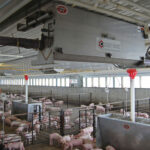Pre-Season Checks on Planters Will Help Deliver Healthy, Uniform Seedling Growth.
With the row-crop planting season imminent, now’s the time to fully prepare your equipment to ensure you are ready to strike during optimum weather and soil conditions. “If you already own a row-crop planter, you should be giving it a...
Pre-Season Checks on Planters Will Help Deliver Healthy, Uniform Seedling Growth.
With the row-crop planting season imminent, now’s the time to fully prepare your equipment to ensure you are ready to strike during optimum weather and soil conditions. “If you already own a row-crop planter, you should be giving it a...With the row-crop planting season imminent, now’s the time to fully prepare your equipment to ensure you are ready to strike during optimum weather and soil conditions.
“If you already own a row-crop planter, you should be giving it a thorough inspection and making any adjustments and repairs,” says Cameron McKenzie, Seeding & Tillage Product Marketing Manager for the farm equipment brand, Challenger. “Worn or incorrectly-aligned components can compromise the machine’s settings with a subsequent negative effect on yields. Do not skip pre-season maintenance. I cannot emphasise this enough. Giving your planter some tender loving care now will give it the very best chance for maximum performance and uniform planting of seed.”
Pre-season maintenance should include cleaning of the seed tubes and monitor sensors. If the seed tubes show signs of wear then these should be replaced. Check the condition of the seed conveyor belt and the seed meters. Adjust or replace worn disc openers and ensure the disc openers and furrow closers are accurately aligned.
Also crucial is to check tyres for the correct pressures. Indeed, this is something that should carried out daily once planting begins since incorrect tyre pressure can influence seed rates. Equal tyre pressure keeps the tool bar level and parallel to the ground. This allows the coulters, disc openers and closing wheels to run perpendicular to the ground rather than being tilted. Ground-driven planters use the tyre for ground driving the seed, fertilizer and chemical metering systems, and therefore, the tyre needs to be properly inflated to match the same tyre diameter used to create the seed rate charts in the operator’s manual. An under-inflated tyre will lead to a higher seeding/fertilization rate as the tyre makes more rotations for each hectare of land covered.
“Maximising uniformity of emergence produces strong, healthy seedlings,” Cameron explains. “Uneven emergence can reduce yields by 10-20%. Plants need to be evenly spaced and planted at uniform depth. Indeed, depth control is one of the big factors affecting germination and consistency in crop emergence.”
To read the full article, please click here




